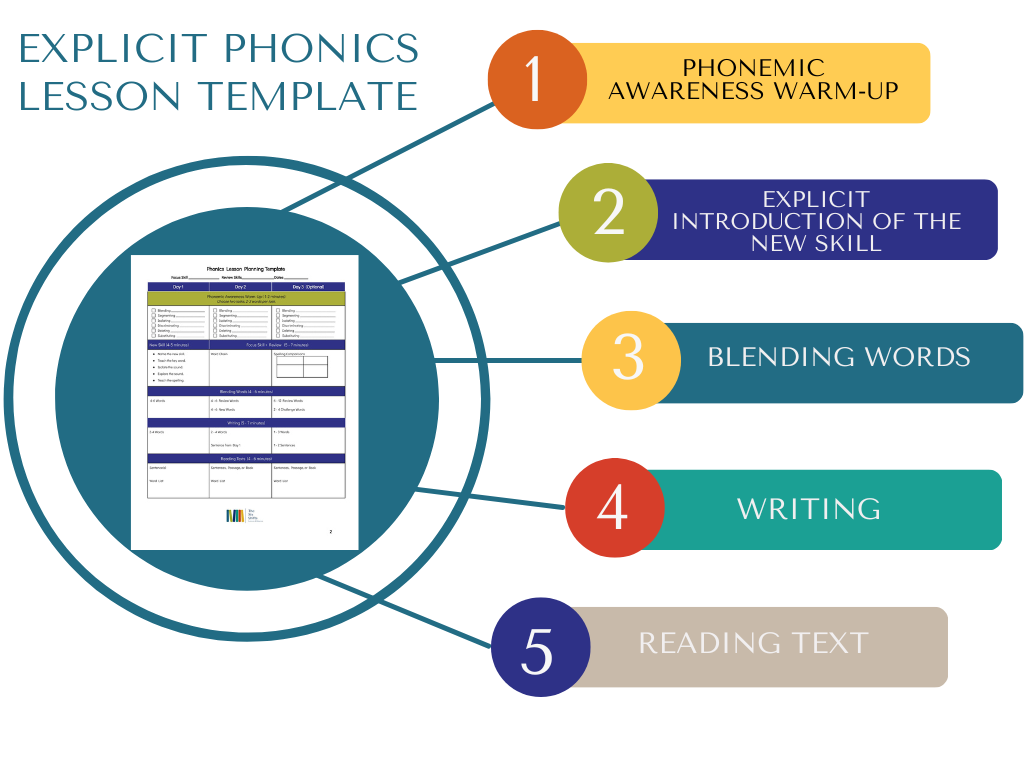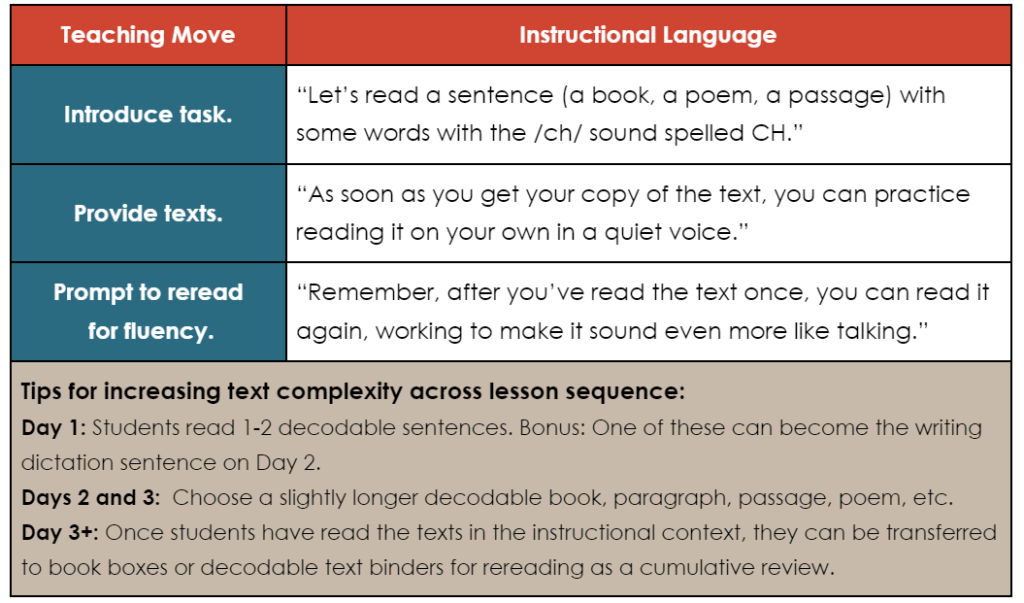Today’s post introduces the final component of our Explicit Phonics Lesson Template. Your readers have made it to the finish line. They’re ready to read connected text!
Having navigated the previous components of the template, you’ve provided a supportive base for your students, and now they’re ready to put what they’ve practiced into action as readers.
But before we move forward, let’s review where we’ve been so far:
1. PHONEMIC AWARENESS WARMUP – This lesson component gives students practice blending, segmenting, discriminating, or manipulating the SOUND that will be at the heart of the rest of the lesson. (“What sounds do you hear in chip?”)
2. EXPLICIT INTRODUCTION OF NEW SKILL – You explicitly teach students how the target sound (phoneme) connects to its corresponding spelling (grapheme). (“The /ch/ sound is usually spelled with two letters working together to make the same sound. CH”).
3. BLENDING WORDS – Blending words will give readers the repetition they need to bolster confidence and automaticity in reading words with the target sound-spelling. (“Let’s blend some words that have the /ch/ sound spelled with the letters CH. . . . chip . . .chin . . . chest”).
4. WRITING DICTATION – Writing words and sentences containing the target skill leverages encoding as the reciprocal practice to decoding words and further strengthens students’ understanding of the target sound spelling. (Let’s write some words that contain the /ch/ sound spelled with the letters CH. . . chat . . .chop. . . such”).
With these four instructional components in place, we can cheer students on as they run the final learning lap (Step 5) and arrive at the finish line of the lesson by reading connected text! At this point, your students are ready to practice reading words composed of the target sound-spelling in context. Your job is to provide them with reading materials that allow them to read all the words.
Choosing Texts for the Lesson
You might be one of the lucky ones with ready access to decodable texts to match all of the phonics concepts you teach. But if you’re like most teachers we know, you likely have some holes to fill. But don’t worry; you can easily supplement by writing some simple, decodable texts yourself. Want to learn more about this? We teach all about it in our online class.
But whether choosing or constructing texts for reading, you will want to
Make sure texts include multiple practice opportunities with words containing a mix of the new target skill and previously learned skills.
Avoid unfamiliar, irregularly-spelled high-frequency words.
Avoid texts containing words that readers can only figure out by relying on picture cues (rather than the print itself).
Of course, whole decodable books are one option, but sentences, short passages, and poems can also allow readers to read target words within context. In fact, on Day 1, we recommend starting small with just one or two decodable sentences that contain several examples of the target sound-spelling. A bonus is that one of these sentences can become the WRITING DICTATION sentence on Day 2.
Orthographic learning will come from the effort spent decoding words with sound-spelling patterns aligned to a target skill. The more strategic you can be as a teacher, offering readers texts aligned in this way, the more opportunities students get to map and ultimately recognize targeted sound-spellings instantly and automatically.
All of this decoding exercise strengthens neural networks and makes word reading increasingly fluent. So these little “read-all-the-words” texts now support BIG important work for successful reading down the road. And, when students learn to leverage print as the path to accurate reading, it also boosts their confidence and enjoyment! (insert cheer) 🥳
So now that you know, WHAT to have students read, let’s take a look at HOW to do it.
And that’s it! A five-step lesson plan that provides you with a strong foundation for brain-friendly instruction of any new phonics skills that makes learning really stick!
And if you want even more practical guidance on how to make learning to read more brain-friendly for your students (and easier for you), we invite you to join us for Shifting the Balance: The Online Class, beginning on November 7th!
Explore our 8-part blog series “Using our Flexible Phonics Lesson Template.”👇
Using Our Flexible Phonics Lesson Template (Part 1): An Introduction
Using Our Flexible Phonics Lesson Template (Part 2): The Phonemic Awareness Warm-up
Using Our Flexible Phonics Lesson Template (Part 3): Explicit Skills Practice
Using Our Flexible Phonics Lesson Template (Part 4): Blending Words
Using Our Flexible Phonics Lesson Template (Part 5): Writing
Using Our Flexible Phonics Lesson Template (Part 6): Reading Text
Using our Flexible Phonics Lesson Template (Part 7): Word Chains
Using our Flexible Phonics Lesson Template (Part 8): Spelling Comparisons
-

Jan Burkins and Kari Yates are authors, speakers, and consultants, who are dedicated to helping teachers around the world translate reading science into simple instructional moves that help teachers make learning to read easier for their students while still centering meaning-making, engagement, and joy.
Recent Posts





